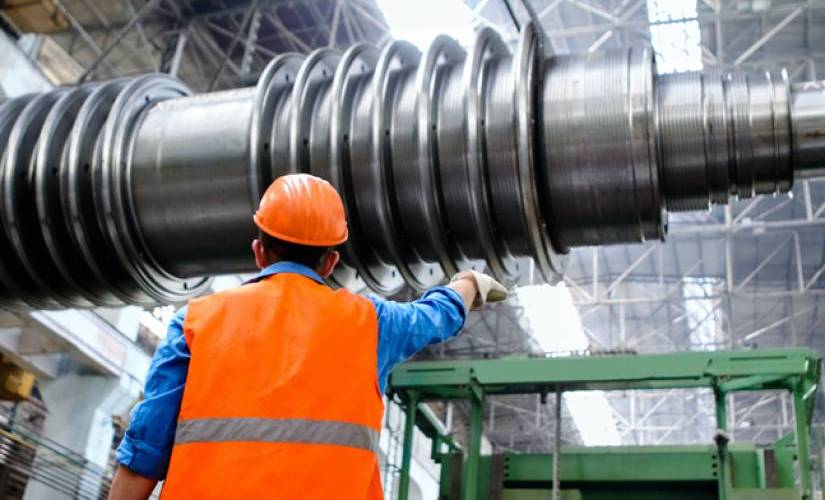Manual operations in manufacturing often lead to increased costs and decreased growth. Manufacturers have to resolve 4 critical challenges: operations optimization, cost savings, production quality improvement, and demand forecasting.
Digitizing one or two processes can only work to an extent and only a complete digital solution could come in handy. Especially, critical challenges like demand forecasting require a robust prediction system based on operation data analysis and without this manufacturers can never plan for the future.
Predictive Analytics in Manufacturing – Why it Matters and How it Works
So, what would be the best possible way to address these challenges?
An interesting yet best way to overcome this challenge is by automating the process with predictive maintenance solutions.
Let’s get started with the applications of predictive maintenance in manufacturing across improving operations and production quality at reduced cost and forecasting demand for the future in detail in the sections below.
What is predictive maintenance?
“Predictive maintenance (PdM) is maintenance that monitors the performance and condition of equipment during normal operation to reduce the likelihood of failures. Also known as condition-based maintenance, predictive maintenance has been utilized in the industrial world since the 1990s.
The goal of predictive maintenance is the ability to first predict when equipment failure could occur (based on certain factors), followed by preventing the failure through regularly scheduled and corrective maintenance.” (Source: Reliable Plant)
Manufacturing Predictive Analytics Market Outlook 2018 to 2026
“The manufacturing predictive analytics market size was valued at $535.0 million in 2018 and is projected to reach $2.5 billion by 2026, growing at a CAGR of 21.7% from 2019 to 2026. The advent of Industry 4.0 boosts substantive recent innovations in manufacturing.” (Source: Allied Market Research)
How the entire predictive maintenance system works
A predictive maintenance system comprises the Internet of Things (to collect data from any surface); Cloud (to process the data); Mobile applications (to push notifications based on data); AI/ML (to analyze and predict insights using data); web application (to share entire operations data under one roof).
The system works like this. Initially, the data will be gathered by IoT devices installed on machinery or assets.
The data will be processed in the Cloud or shared with the respective staff as notifications/warnings or alerts.
The processed data will be fed into the AI/ML system to analyze and predict the outcomes of the data accumulated over a certain period (generally historical data of at least 1 year is recommended).
The prediction reports will be shared with the respective stakeholders to make the necessary actions or decisions.

(Note: The image above illustrates how Predictive Maintenance works in a manufacturing plant)
Benefits of Predictive Maintenance for manufacturing
- Capture condition-based real-time data collection accurately
- Foresee & predict machine downtime early
- Higher transparency
- Reduced product delays
- Improve planned production rate
- Lower maintenance costs
- Foresee machine failures
- Reduce repair cost
- Increase equipment’s life and utilization
- Improve employee safety
- Increased overall profits
- Forecast demand
By now you’d have gathered Predictive Maintenance basics and its benefits.
Let’s dive deep into the discussion of how Predictive Maintenance is transforming manufacturing operations and growth.
Predictive maintenance for operation improvement
Operational efficiency plays a key role in the manufacturing production rate and quality. As this involves people, machines and technology, optimizing everything matters to enjoy a hassle-free production output matching the expected outcomes.
Before getting started with operations, it is a must to understand the challenges that impact operational efficiency.
It is a must to analyze the performance of machines operated at different levels (peak, medium or normal). The efficiency of the machines matters a lot when it comes to improving operational efficiency. Only if the machines are utilized to the fullest and perform to their best achieving maximum output is possible.
To accomplish this, it is a must to monitor the performance of every machine and its every movement possible. IoT is used to gather the data and based on the historic data analysis, the faults or inefficiencies in the operations are identified and rectified.
Not only that the problems that can arise in the future can be predicted with the IoT-enabled predictive maintenance system.
Generally, the OEE (overall equipment effectiveness) is calculated using the IoT data and this is analyzed and improved to make the overall operations efficient and rewarding.
“OEE = Availability * Performance * Quality”
Another scenario would be the performance of resources against the machines. It needs to be identified and fixed to improve staff efficiency. By digitalizing the process with Industry 4.0 solutions like IoT, it is easier to improve the efficiency of the overall operation.
Predictive maintenance for machine utilization and management
Unplanned maintenance of machines costs dearer for most manufacturing companies and this needs to be monitored and controlled to achieve maximum outputs.
Malfunctions or faulty machines impact manufacturing in two ways – first, they will reduce production quality and second, they will incur frequent repair costs.
So, it is a must to find out a way to find the inefficiency in machines and improve their performance before an outage happens, costing you an arm and a leg.
With a predictive maintenance system, the data gathered from every movement of the machine will provide a significant volume of data which then can be analyzed using an AI/ML program to identify the faults and malfunctions of machines.
A predictive maintenance system provides data on the asset’s current condition, its availability, defect information to help you rethink your production plans.
With such an approach and data trends, foreseeing and predicting the machine failures early as possible which leads to lower maintenance repair and labor cost. This could potentially save millions for your business.
Predictive maintenance for production quality
Even though predictive maintenance or IoT doesn’t have a direct impact on the quality of production or its rate, the combination of these two elements can really create a big impact on the overall production on the floor significantly.
As the IoT can help in streamlining the machine, people and technology. A predictive maintenance system will take care of the improved efficiency of machines — expecting an improvement in the production quality and rate is never a challenge for manufacturers.
Predictive maintenance for demand forecasting
An exclusive advantage of predictive maintenance for manufacturers is demand forecasting.
As the manufacturers have tons of data but left with no insights, the process of improving and planning ahead always slips. With a predictive maintenance system in place, it is seamless to foresee what can be done in the years to come based on the historical data.
As the predictive maintenance system curbs the data silos and creates 100% transparency over the entire manufacturing plant, it is never impossible to realize the current position and what to expect in the future.
With a plan and knowing what to expect — the manufacturing executives can plan well in advance to meet the customer requirements. Not only that you can easily identify the efficiency of machines, staff, and repair costs to plan the future goals — which will be practical.
Predictive maintenance use case – Asset management
Predictive maintenance has a wide number of use cases in the manufacturing industry, especially in condition-based monitoring of assets.
There can be scenarios where assets will be operated under different temperatures and monitoring their performance for different conditions is a must to maintain the production quality and rate.
These kinds of assets should be monitored constantly to keep them in good shape and even minor malfunctions or defects can cost the company millions of dollars.
With a predictive maintenance system, monitoring the asset under different conditions is seamless and the historical data obtained will help in foreseeing the asset performance in the future and when it needs replacement or maintenance.
Predictive maintenance helps in finding out
- When the asset needs replacement
- When asset maintenance is required
- How long it will be efficient
- When it can fail
- What is causing the failure
- What is the risk associated with failure
- Which maintenance would be practical for improving asset utilization
Predictive maintenance ROI
Putting a functional predictive maintenance program in place can yield remarkable results: a tenfold increase in ROI, 25%-30% reduction in maintenance costs, 70%-75% decrease of breakdowns, and 35%-45% reduction in downtime.
When savings are expressed per labor hour, predictive maintenance costs $9 hourly pay per annum while preventive maintenance costs $13 hourly pay per annum. (Source: Infoq.com)
Summary
From what we have discussed above, predictive analytics is a boon to manufacturers as this will reduce the maintenance cost while improving the operational efficiency and production quality and help you plan for future programs.
Predictive analytics is evolving and the latest addition to Predictive Analytics, Prescriptive analytics is gaining steam in the industrial landscape.
The latter is a sub-component of predictive analytics and provides data on what is causing equipment failure and recommendations to improve the failure or defect.
With too many companies investing in predictive maintenance systems, it is high time for you to decide to keep up with the competition. Get started now before one of your competitors does.





